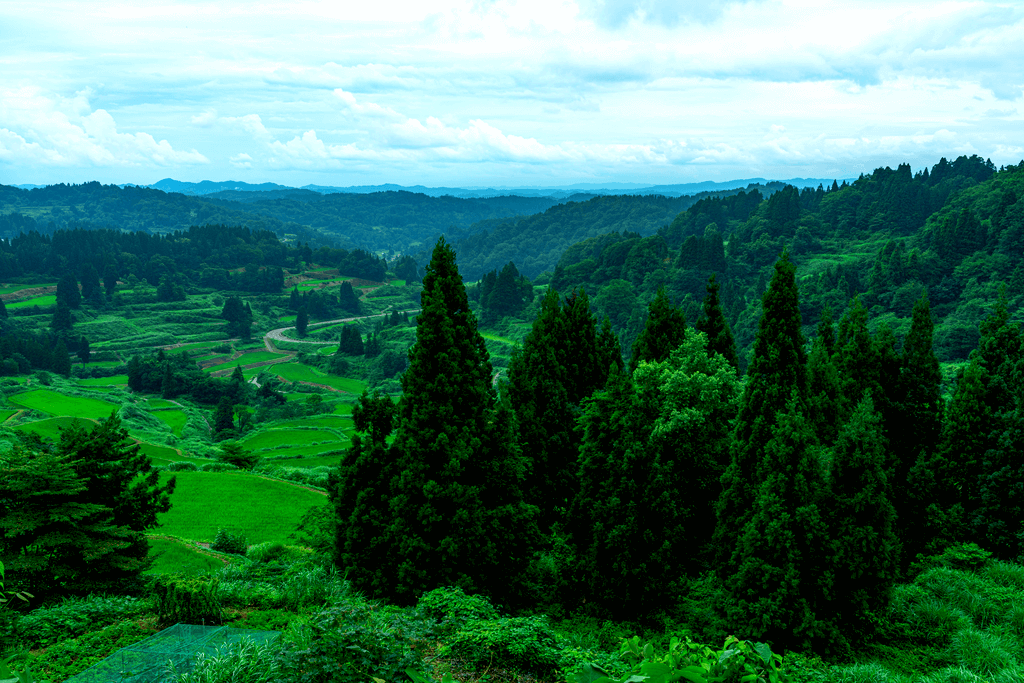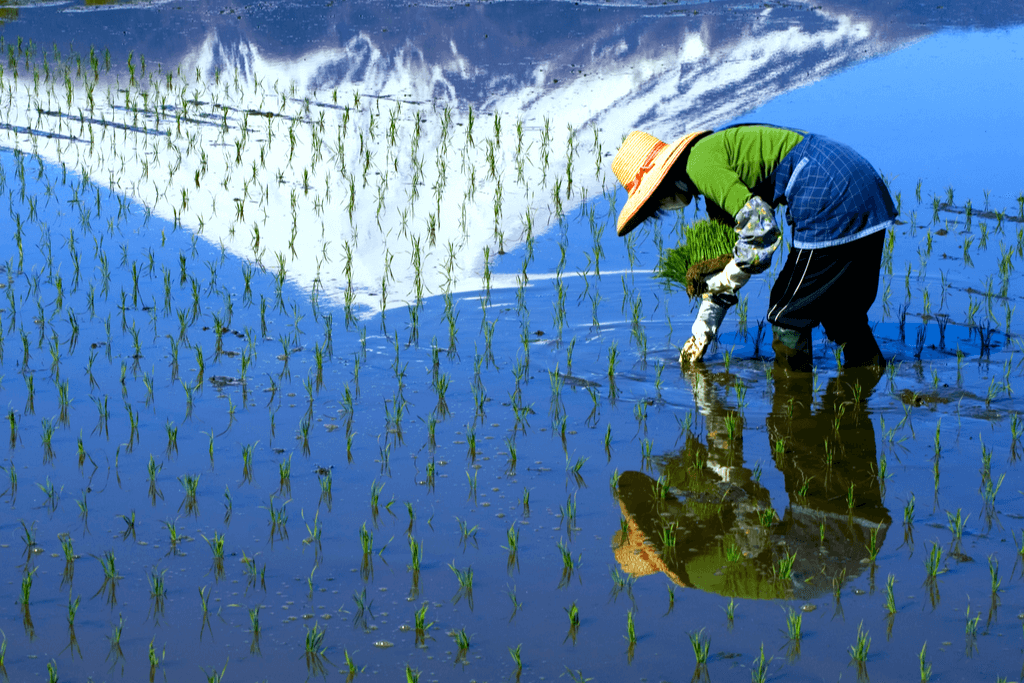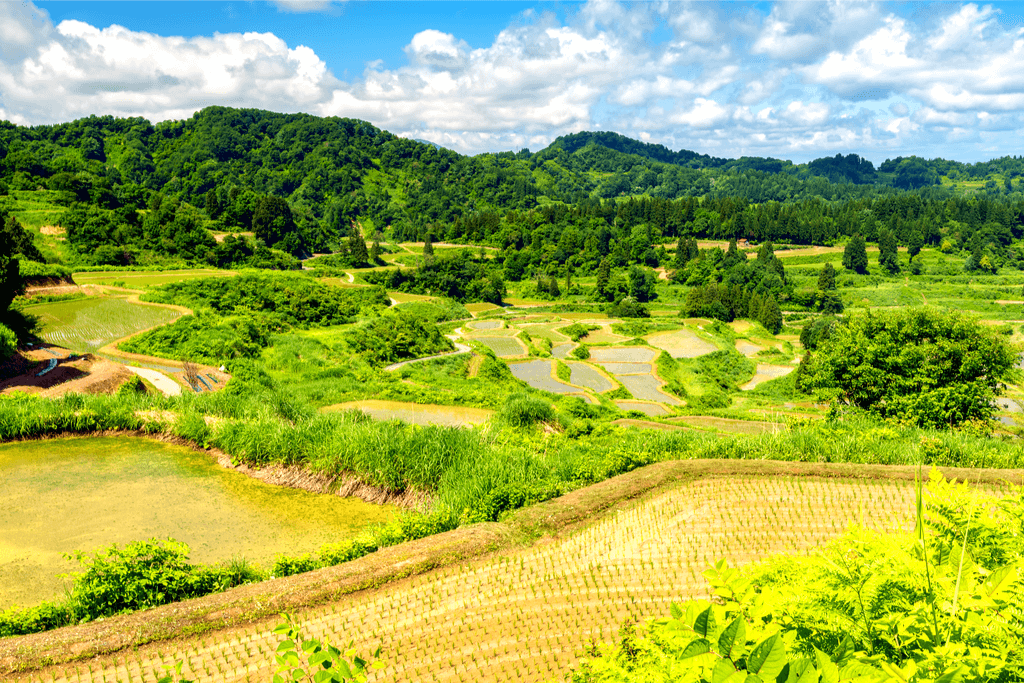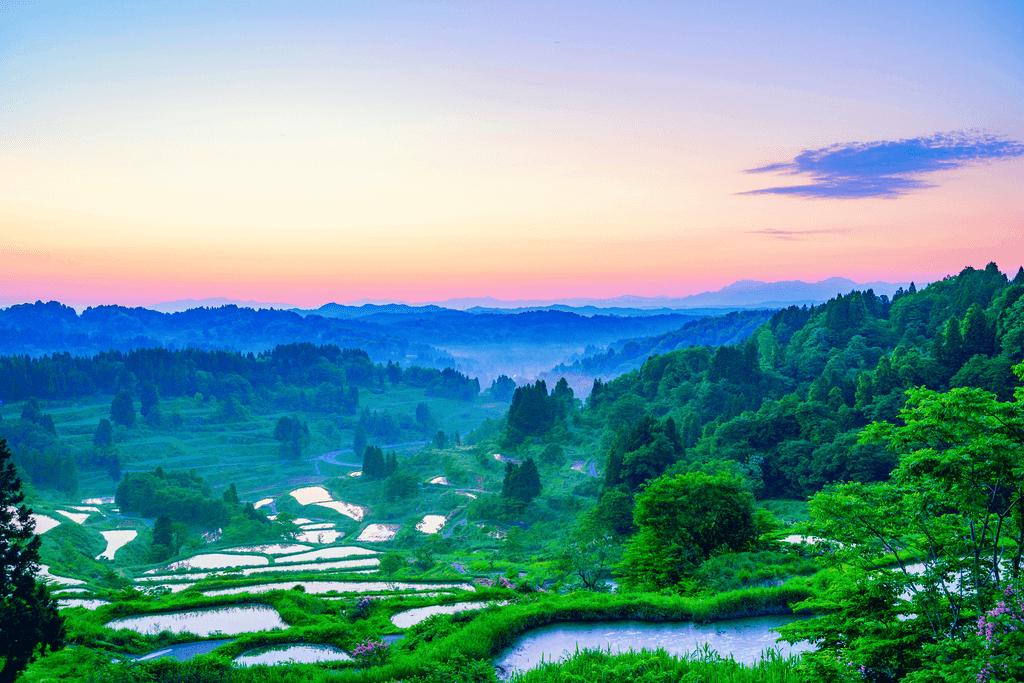The famous rice paddy Hoshitoge Rice Terrace in Tokamachi, Niigata, is a stunning example of Japan’s rice cultivation’s beauty and tradition. This rice paddy’s terraces create a breathtaking landscape showcasing the local farmers’ hard work and dedication.
Visitors can explore the winding paths and enjoy views from the rice paddies’ peak. They can also visit local shops to enjoy traditional Japanese food made from locally grown ingredients. In addition, they can enjoy Niigata’s fresh coastal air and gorgeous mountains nearby.
The history of Hoshitoge Rice Terrace dates back to the Edo period (1603-1867). During this time, the rice paddies efficiently utilized land and water resources in the region. Over the centuries, farmers passed the land down to the next generations. Because of this, it is now a national treasure and a cultural heritage site.

Here, visitors can appreciate the traditional rice paddy cultivation methods, which continue to survive modernization and urbanization. Farmers still grow and harvest rice by hand, and visitors can learn about their techniques and tools.
These rice paddies offer a unique and unforgettable experience. It’s mainly for those seeking to immerse themselves in the beauty and tradition of rural Japan. With its stunning views, rich history, and authentic local food, it is a highlight of Niigata’s culture and heritage.
Do you want to get a taste of Japanese tradition? Check out Sakuraco! Sakuraco delivers traditional Japanese snacks, teas, sweets, and snacks from local Japanese makers directly to your door so you can especially enjoy the latest treats instantly from Japan!
Table of Contents
ToggleWhen should I visit the rice paddy?
Hoshitoge Rice Terrace is a beautiful destination throughout the year. However, the best seasons to visit are planting and harvesting. During the planting season, visitors can see the local farmers transplanting seedlings into the rice paddies and watch as the fields slowly turn green with new growth. Planting season is a beautiful time to learn about the process of rice cultivation and to see the hard work that goes into growing a crop.
Harvesting and Planning
The harvest season is another excellent time to visit Hoshitoge Rice Terrace. During this time, the fields are a sea of golden stalks, and visitors can see the local farmers working together to harvest the rice. Harvest season is a unique and exciting time at the terraces as the entire community comes together to bring in the harvest.

In addition to the planting and harvest seasons, the rice paddies are beautiful throughout the year, especially during the summer and autumn. In the summer, the fields are lush and green, while in the autumn, they turn a stunning golden yellow, creating a breathtaking landscape.
Visitors to Hoshitoge Rice Terrace can take in the stunning views. As a result, they can immerse themselves in Japan’s tradition and beauty of rice cultivation. No matter the season, a visit to Hoshitoge is a truly unforgettable experience that the whole family can enjoy.
What should I do when I get there?
When visiting Hoshitoge Rice Terrace, proper etiquette is essential to ensure a safe and enjoyable experience. Here are some guidelines:
- Respect the land: The rice paddies are a working farm and an important cultural heritage site, so it is essential to treat the land with respect. Avoid walking on the rice plants or disturbing the irrigation channels, and be mindful of where you step.
- Dress appropriately: Visitors are encouraged to dress modestly, especially when visiting the local shops and museums. It is also a good idea to wear comfortable, closed-toe shoes that are appropriate for walking on the paths and trails.
- Follow signage: There are signs throughout the rice paddies that indicate the best routes to follow. Following these signs and avoiding walking on the rice plants is essential.
- Be mindful of the environment: Hoshitoge Rice Terrace has beautiful natural scenery, so keeping the surroundings clean and free of waste is essential.

By following these basic rules and etiquette guidelines, visitors to Hoshitoge Rice Terrace can have a safe and enjoyable experience. Therefore, people can preserve this important cultural heritage site for future generations.
Have you ever visited the Hoshitoge Rice Terrace before? How about any other rice paddies in the Niigata area? Let us know in the comments below!











